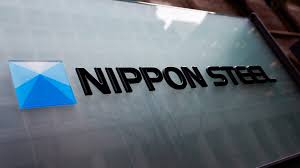Trump just signed a new deal with the Japanese steel company Nippon Steel to acquire US Steel. The details are still unclear but Trump touted the deal as allowing for more American jobs and increasing US steel competitiveness. To confirm this, he increased tariffs on steel imports from 25% to 50%. One would look at this as a good move, but I can’t see the sense in the move myself.
It creates many questions. How is it right we allow a Japanese company to have ownership over US Steel to create jobs in the US? That is a very bizarre explanation. Why don’t we just subsidize US Steel and expand its production in America? It just seems to me that most of the people in his administration are incompetent and don’t know what they are doing. They need better economists, accountants and lawyers to advise them.
US Steel Financials
I took a look at US Steel’s financials and it told me the story of that company. It is undercapitalized. Several states provided subsidies to US Steel but the federal government only gave loans to indemnify US Steel if it suffered insolvency or future bankruptcy. Basically, the federal government was just keeping US Steel afloat, it wasn’t helping it thrive. Most states are insolvent and need the federal government support so realistically US Steel needs more federal government support in the long run. Manufacturing is a capital-intensive enterprise, so government subsidies are the lifeblood of the industry. Profit margins are slim so most of these companies lack liquidity and often have to rely on corporate or government bonds to stay liquid. All economists and accountants know that manufacturing companies often fail because of liquidity problems. There has to be a clever solution to this problem.
Alternative Considerations for US Steel
If I were Trump, I would have the federal government acquire a piece of US Steel and then actively subsidize it. I wouldn’t nationalize it because management and ownership has the expertise to operate the plant, so the federal government is more an investor of the company rather than an active owner. In the government’s books, the subsidies would count as investment instead of an expense, so the whole situation would be a balance sheet phenomenon. Investment is an asset rather than an expense or liability and it would be amortized so it could be considered a long-term capital asset. This would mean that the subsidies would not be counted towards the national debt since it is an asset instead of a liability or expense. The federal government could keep US Steel competitive by giving it orders to manufacture steel for US cars or planes. By law, the federal government could discriminate against other companies since it is a market participant. Once US Steel becomes profitable, then the government can receive income from its profits and that could be money in the federal government’s pocket. Just an idea.

Leave a Reply